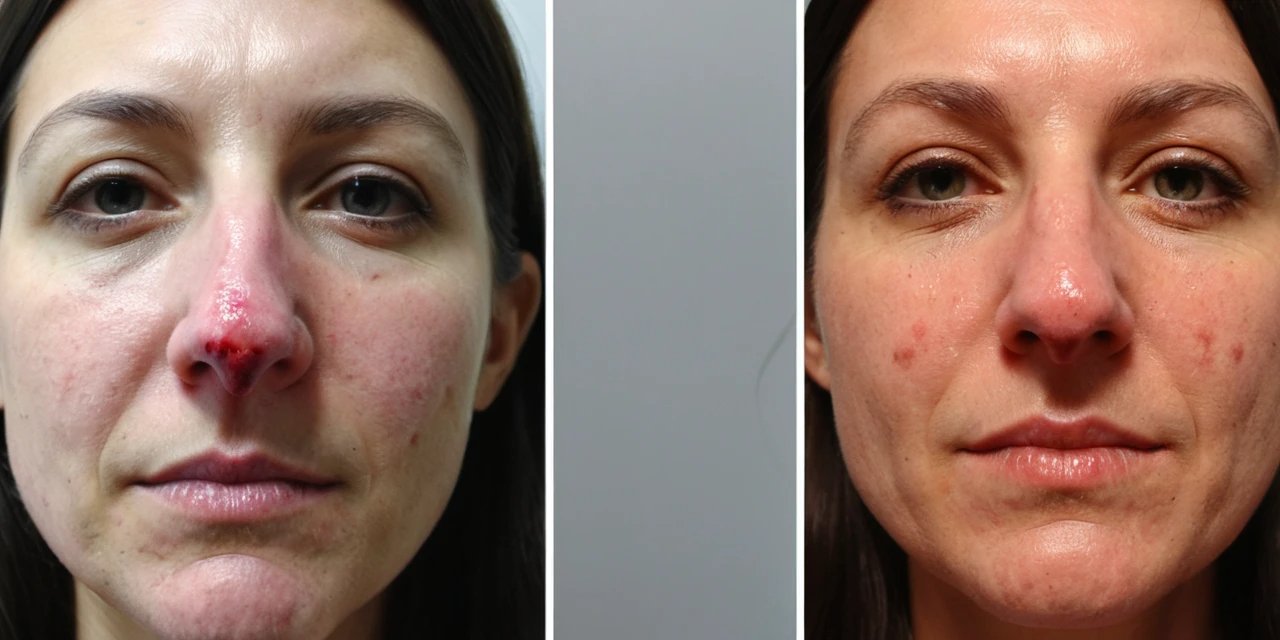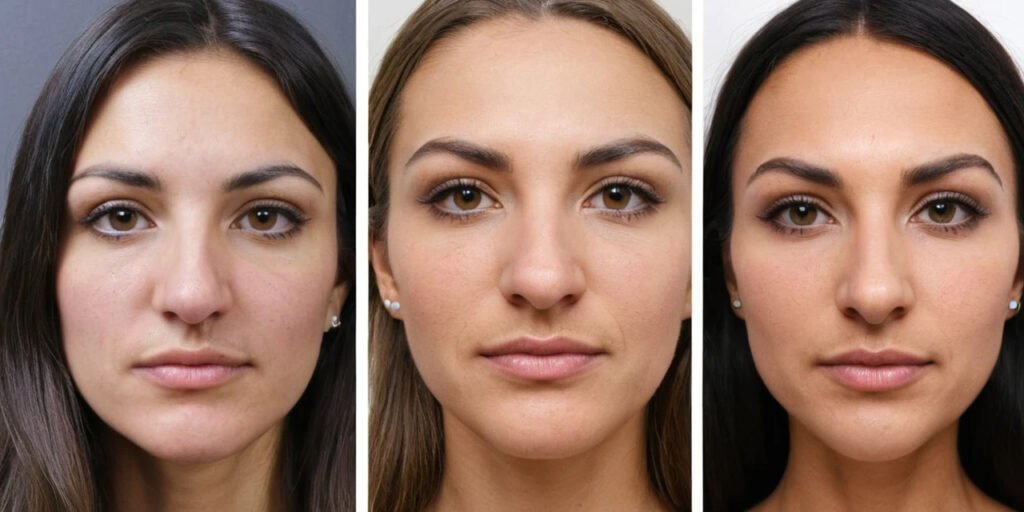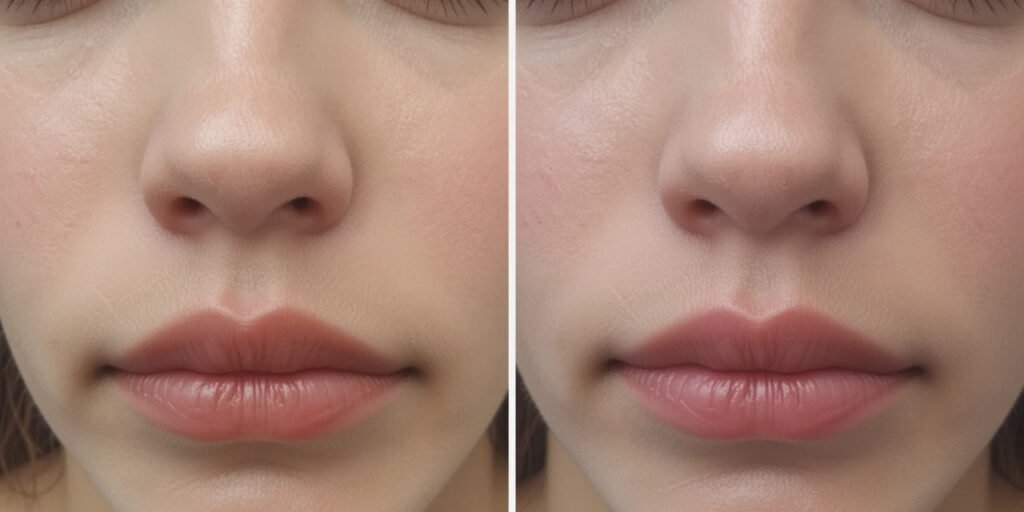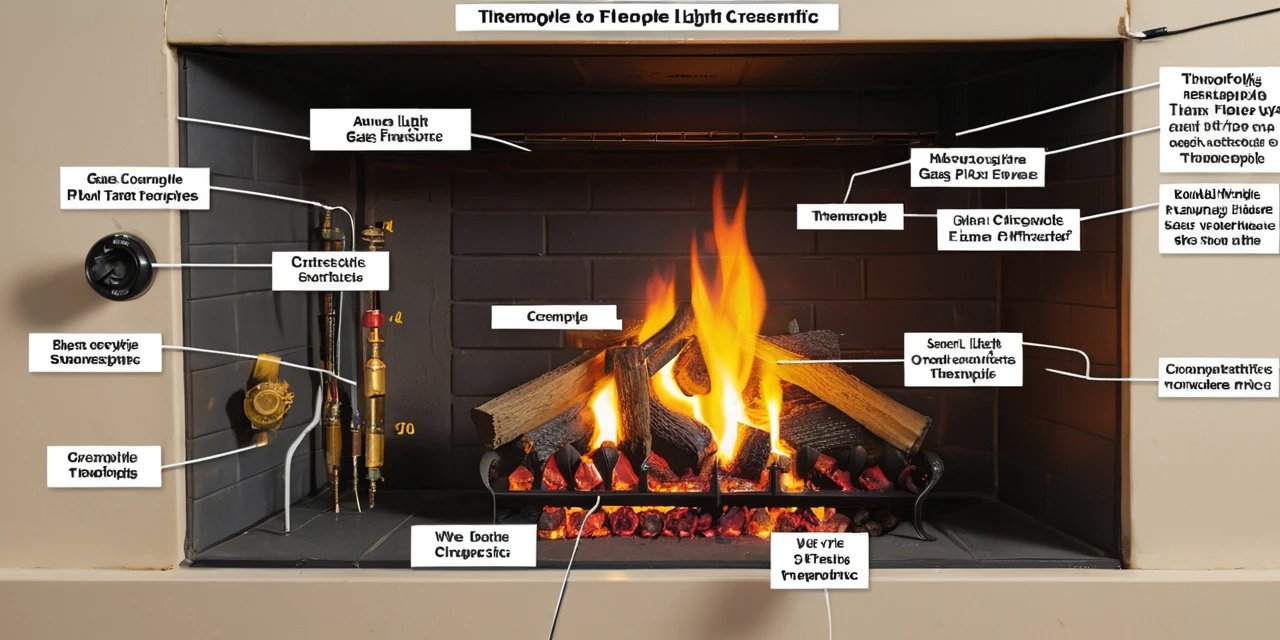
Nose Fillers Gone Wrong: 7 Alarming Complications You Must Know Before Treatment
April 29, 2025Introduction: Understanding the Risks of Nose Fillers Gone Wrong
Nose fillers gone wrong represent a growing concern in the aesthetic medicine community as non-surgical rhinoplasty gains popularity. While dermal fillers offer a seemingly convenient alternative to surgical nose jobs, the potential complications when these procedures go awry can be devastating—both aesthetically and medically. This comprehensive guide explores the full spectrum of what can happen when nose fillers don’t proceed as planned, from minor complications to serious medical emergencies that every potential patient should be aware of.
The appeal of injectable fillers is understandable: quick results, minimal downtime, and lower initial costs compared to surgical procedures. However, the increasing number of nose fillers gone wrong cases serves as a sobering reminder that these procedures carry significant risks that are often underestimated. Whether you’re considering your first treatment or are already familiar with dermal fillers, understanding these potential complications is crucial for making informed decisions about your facial aesthetics and overall health.
The Rising Popularity of Non-Surgical Rhinoplasty

Before diving into what can go wrong, it’s important to understand why non-surgical rhinoplasty using dermal fillers has become so popular. The procedure typically involves injecting hyaluronic acid-based fillers such as Juvederm or Restylane into specific areas of the nose to:
- Smooth out bumps on the bridge
- Lift and define the nasal tip
- Improve symmetry
- Create a more defined bridge
- Correct minor deformities
According to the American Society of Plastic Surgeons, non-surgical rhinoplasty procedures have increased by 32% since 2018, with over 200,000 procedures performed annually in the United States alone. This surge in popularity can be attributed to several factors:
- Minimal downtime (often marketed as a “lunchtime procedure”)
- Lower initial cost than surgical rhinoplasty
- Immediate results
- Relatively less pain compared to surgery
- Temporary nature allowing patients to “test” a new look
However, this popularity has come with consequences. As more providers—some with limited training—offer these services, the incidence of nose fillers gone wrong has increased proportionally.
Common Types of Nose Fillers Gone Wrong Complications
When nose fillers go wrong, the complications can range from minor aesthetic disappointments to life-threatening emergencies. Understanding these potential outcomes is essential for anyone considering non-surgical rhinoplasty.
1. Vascular Complications: The Most Dangerous Outcome
The most serious complication of nose fillers gone wrong is vascular occlusion—when filler material enters blood vessels, blocking blood flow to surrounding tissues. The nose region is particularly high-risk due to its rich vascular network, with connections to critical structures including the eyes.
Vascular complications include:
- Tissue Necrosis: Death of skin and surrounding tissue due to blocked blood supply
- Visual Impairment: Partial or complete blindness if filler material reaches the ophthalmic artery
- Stroke: In extremely rare but documented cases, filler material can reach cerebral circulation
Dr. Sarah Johnson, a board-certified facial plastic surgeon, explains: “The nasal region has an intricate vascular network with direct connections to the ophthalmic vessels. When filler enters these vessels, it can travel to the eye and cause immediate vision loss. This is irreversible in most cases.”
Alarming statistics from a 2023 study published in the Journal of Aesthetic Medicine revealed that nasal procedures account for approximately 24% of all vascular occlusion events related to fillers.
2. Asymmetry and Contour Irregularities

Among the most common aesthetic complications of nose fillers gone wrong is asymmetry. This occurs when:
- Filler is placed unevenly
- Filler migrates after placement
- The patient has pre-existing asymmetry that becomes more pronounced
- Swelling occurs unevenly during healing
Contour irregularities may appear as:
- Visible bumps or lumps
- Unnatural angles
- “Overfilled” appearance
- Widening of the nasal bridge
“Even in experienced hands, achieving perfect symmetry can be challenging,” notes celebrity aesthetician Jennifer Chen. “The nose is three-dimensional, and fillers behave differently as they integrate with your tissues. This is why technique and experience matter tremendously.”
3. Tyndall Effect: The Blue-Gray Discoloration
The Tyndall effect is a distinctive blue-gray discoloration that occurs when hyaluronic acid fillers are placed too superficially beneath the skin. This physical phenomenon happens when light scatters through the clear gel filler, creating a bluish appearance—similar to why veins appear blue under the skin.
This complication is particularly problematic in the nose because:
- The skin on the nose is often thin, especially at the tip and sides
- The angular surface makes improper depth more noticeable
- Once it occurs, it typically doesn’t resolve without intervention
Treatment for Tyndall effect typically requires dissolving the filler with hyaluronidase (an enzyme that breaks down hyaluronic acid) and starting over.
4. Filler Migration: When Product Moves Beyond the Target Area
Dermal fillers can potentially migrate from their initial injection site to surrounding areas, creating unintended changes in appearance. This migration can occur due to:
- Natural facial movements and muscle activity
- Pressure applied to the area after treatment
- Improper injection technique
- Gravitational forces
- The specific properties of the filler used
In the nose, migration can lead to:
- Widening of the nasal bridge
- Bulbous or droopy nasal tip
- Irregular contours along the sides of the nose
- Unintended filling of adjacent areas like the tear troughs
According to a recent case study by the American Academy of Dermatology, filler migration can occur months or even years after the initial treatment, making it a delayed complication of nose fillers gone wrong that patients should monitor for.
5. Infection and Inflammatory Reactions

While relatively uncommon with proper technique, infections following nose filler procedures can occur and represent a serious nose fillers gone wrong scenario. The risk factors include:
- Non-sterile injection technique
- Contaminated product
- Pre-existing skin conditions
- Compromised immune system
- Poor aftercare
Symptoms of infection include:
- Increasing rather than decreasing swelling after 48 hours
- Redness that spreads beyond the injection site
- Heat and pain at the treatment area
- Systemic symptoms like fever
- Discharge or pustules
Additionally, inflammatory reactions can occur even without infection. These include:
- Biofilm formation: Bacterial colonies that form on the filler material, creating chronic inflammation
- Granulomas: Small areas of inflammation that can appear months or years after injection
- Delayed hypersensitivity reactions: An immune response to the filler material that develops over time
Dr. Michael Rodriguez, an infectious disease specialist who has treated complications from cosmetic procedures, warns: “The nose is part of your upper respiratory tract and naturally colonized with bacteria. This makes sterile technique absolutely critical during these procedures.”
Who Is Most at Risk for Nose Fillers Gone Wrong?
Not everyone has the same risk level for experiencing complications. Understanding your personal risk factors is crucial before proceeding with treatment.
High-Risk Patient Profiles
Certain individuals should approach non-surgical rhinoplasty with additional caution or avoid it altogether:
- Previous rhinoplasty patients: Altered anatomy can make filler placement more unpredictable and increase complication risks
- Those with compromised nasal blood supply: Previous trauma, surgeries, or certain medical conditions
- Autoimmune disorder patients: Higher risk of inflammatory reactions
- Patients with body dysmorphic disorder: May seek excessive treatments, increasing complication risks
- Those on blood-thinning medications: Higher risk of bruising and bleeding
- Patients with multiple previous filler treatments: Increased risk of unpredictable results due to existing product
The Provider Factor: Experience Matters
Perhaps the single most important factor in preventing nose fillers gone wrong is the selection of a qualified provider. Statistics from the International Society of Aesthetic Plastic Surgery show that complications are significantly more common when procedures are performed by:
- Providers with less than 2 years of injection experience
- Those who perform fewer than 10 non-surgical rhinoplasties monthly
- Individuals without medical training in facial anatomy
- Providers who lack emergency protocols and resources
“The nose is one of the most technically challenging areas for filler injections,” explains Dr. Lisa Wang, a board-certified plastic surgeon. “The provider needs not only technical skills but also comprehensive knowledge of the underlying vascular anatomy and emergency management techniques.”
Warning Signs: Identifying Nose Fillers Gone Wrong Early
Recognizing the early warning signs of complications can be the difference between a minor correction and a medical emergency. Patients should be vigilant for:
Immediate Red Flags (During or Immediately After Treatment)
- Severe, disproportionate pain during injection
- Immediate blanching (whitening) of the skin
- Visual disturbances of any kind
- Blue-gray discoloration appearing suddenly
- Immediate and severe swelling beyond what’s expected
Signs in the First 24-48 Hours
- Pain that increases rather than decreases
- Spreading redness
- Skin color changes (especially white or dark patches)
- Blistering or skin breakdown
- Fever or chills
Later Complications (Weeks to Months After)
- New lumps or asymmetry that wasn’t initially present
- Progressive softening of results in some areas but not others
- Persistent redness or tenderness
- Delayed onset nodules or hardening of tissue
- Visible distortion when animating the face (smiling, etc.)
“Any unusual symptoms should be reported to your provider immediately,” advises certified aesthetic nurse specialist Rebecca Torres. “Particularly with vascular complications, every minute counts in preventing permanent tissue damage.”
Emergency Management of Serious Complications

When serious complications occur, immediate and appropriate management is critical. Understanding the emergency protocols can help patients advocate for proper care if needed.
Vascular Occlusion Protocol
The gold standard treatment for vascular occlusion includes:
- Immediate recognition and cessation of injection
- High-dose hyaluronidase injection (to dissolve the filler)
- Warm compress application to increase blood flow
- Massage of the affected area
- Aspirin administration (to prevent further clotting)
- Potentially nitroglycerine paste application
- Hyperbaric oxygen therapy in severe cases
- Ongoing monitoring and repeated hyaluronidase as needed
“Time is tissue,” emphasizes Dr. James Peterson, an emergency medicine physician who has treated filler complications. “The window for intervention in vascular occlusion is measured in hours, not days. This is why patients should only receive fillers at facilities equipped to handle emergencies.”
When to Seek Emergency Care vs. Contact Your Provider
Patients should know when to go directly to emergency care versus when to contact their provider:
Emergency Room/911 Situations:
- Visual changes (blurriness, loss of vision, seeing spots)
- Severe pain with blanching (whitening) of skin
- Significant skin color changes (white or blue-purple discoloration)
- Spreading skin darkening or blistering
- Any symptoms of stroke or severe allergic reaction
Contact Provider Situations:
- Asymmetry without pain or skin changes
- Lumps or bumps without other symptoms
- Bruising more extensive than expected
- Mild to moderate swelling lasting longer than expected
- Tyndall effect (blue-gray tint)
Prevention: Minimizing Your Risk of Nose Fillers Gone Wrong
While no procedure is without risk, there are significant steps patients can take to minimize the chances of experiencing nose fillers gone wrong.
Choosing the Right Provider
This is arguably the most important factor in preventing complications:
- Verify credentials: Look for board-certified dermatologists, plastic surgeons, facial plastic surgeons, or oculoplastic surgeons with specific training in non-surgical rhinoplasty
- Check experience level: Ask how many nasal procedures they perform monthly
- Review before/after photos: Specifically of nose procedures, not just facial fillers in general
- Ask about emergency protocols: They should have hyaluronidase on hand and clear emergency plans
- Research reviews: Look specifically for feedback about nasal procedures
Critical Questions to Ask Before Treatment
Prepare to ask your provider these questions:
- What specific filler product will you use and why?
- What is your experience with non-surgical rhinoplasty specifically?
- What complications have you managed in the past?
- Do you have emergency supplies (particularly hyaluronidase) on hand?
- What is your protocol if vascular occlusion is suspected?
- How many syringes do you anticipate using? (Be wary of excessive amounts)
- What results can I realistically expect given my anatomy?
- What alternatives might be better suited for my specific concerns?
Pre-Treatment Preparations
To minimize risks:
- Avoid blood-thinning medications and supplements (with physician approval) for 1-2 weeks before treatment
- Avoid alcohol for 24-48 hours before treatment
- Arrive with a clean face free of makeup
- Take photos of your nose from multiple angles before treatment for comparison
- Consider arnica or bromelain supplements to reduce bruising (discuss with your provider)
- Be well-hydrated on the day of treatment
Correcting Nose Fillers Gone Wrong: Treatment Options

When complications do occur, various treatment options exist depending on the specific issue:
1. Dissolving the Filler
For hyaluronic acid-based fillers (the most commonly used in the nose), hyaluronidase can be injected to dissolve the product. This enzyme works within hours to break down the filler.
Important considerations:
- Results are often immediate but may continue to improve over 24-48 hours
- Multiple sessions may be required for complete dissolution
- Small risk of allergic reaction to hyaluronidase itself (skin testing may be recommended)
- Starting fresh after dissolution typically yields better results than trying to “fix” problematic filler with more filler
2. Managing Long-Term Complications
For more persistent issues such as granulomas or chronic inflammation:
- Steroid injections may reduce inflammatory responses
- Antibiotics might be prescribed for biofilm-related complications
- Surgical excision is occasionally required for severe granulomas or calcified filler material
- Laser treatments can sometimes improve texture issues related to fibrosis
3. When to Consider Surgical Rhinoplasty After Complications
In some cases, surgical rhinoplasty may become the preferred option after experiencing nose fillers gone wrong:
- When filler complications have caused structural damage
- If non-HA fillers that can’t be dissolved have migrated extensively
- When multiple attempts at correction with fillers have failed
- If the complications have resulted in scar tissue or permanent changes
“Sometimes patients come to me after multiple unsuccessful filler treatments, and their nose has actually become more difficult to treat surgically because of the tissue changes and scarring from the fillers,” explains Dr. Robert Chang, a rhinoplasty specialist at Stanford Medical Center.
The Legal Landscape: Your Rights When Fillers Go Wrong
Understanding your legal rights and the regulatory landscape around fillers can be important if you experience serious complications.
Provider Responsibilities
Qualified providers have specific responsibilities:
- Proper informed consent discussing all potential risks
- Appropriate assessment of whether you’re a suitable candidate
- Using FDA-approved products for their intended purposes
- Having emergency protocols and supplies available
- Proper follow-up care
Documentation That Matters
If complications occur, these documents become important:
- Before and after photos
- Detailed consent forms listing specific risks
- Treatment notes including product used, lot number, and injection locations
- Communications with your provider about concerns
- Medical records related to any complications and treatments
When to Consider Legal Consultation
While most complications can be managed medically, in certain situations legal counsel may be appropriate:
- Permanent damage resulting from negligent care
- Use of counterfeit or unauthorized products
- Procedures performed by unqualified individuals
- Failure to recognize and appropriately treat complications
- Refusal to provide proper follow-up care
Natural Alternatives to Dermal Fillers for Nose Enhancement
For those concerned about the risks of nose fillers gone wrong, several non-injectable alternatives can provide subtle improvements:
Makeup Techniques
Skilled contouring can create the illusion of:
- A straighter nasal bridge
- More defined tip
- Narrower appearance
- Reduced appearance of bumps
Professional makeup artists can teach personalized techniques, or numerous tutorials are available through reputable beauty education platforms.
Non-Invasive Devices
Some newer technologies claim to provide temporary nose reshaping without injections:
- Nose shapers (temporary external devices)
- Specialized facial exercises
- Electrical stimulation devices
However, evidence for their effectiveness is limited, and results are typically subtle and temporary.
The Role of Photography Angles and Lighting
Understanding how photography affects the appearance of your nose can help with self-perception:
- Photos taken from below accentuate nasal imperfections
- Harsh overhead lighting emphasizes bumps and asymmetries
- Selfie cameras can distort nasal proportions due to their wide-angle nature
Learning your most flattering angles can improve self-image without medical intervention.
The field continues to evolve to address the issue of nose fillers gone wrong:
Emerging Technologies
Several advancements may improve safety:
- Ultrasound-guided injections to visualize vessels
- Cannula-only techniques that reduce vascular risks
- New filler formulations with improved safety profiles
- AI-assisted planning for optimal injection points
- Real-time vascular mapping technologies
Frequently Asked Questions About Nose Fillers Gone Wrong
How common are serious complications from nose fillers?
Serious vascular complications from nose fillers occur in approximately 1 in 1,000 cases according to recent studies, though minor complications like bruising and asymmetry are much more common, affecting about 15-20% of patients to some degree. The risk increases significantly when procedures are performed by inexperienced providers.
Can nose fillers cause permanent damage?
Yes, in certain circumstances nose fillers can cause permanent damage. Vascular occlusions that aren’t promptly treated can lead to tissue necrosis and scarring. Additionally, vision loss from filler embolization to the ophthalmic artery is typically permanent and irreversible, even with immediate treatment.
How long do I need to wait to dissolve nose fillers if I don’t like the results?
For non-emergency aesthetic concerns, most providers recommend waiting 2-4 weeks after injection before dissolving hyaluronic acid fillers, as some initial asymmetry may resolve as swelling subsides. However, for signs of vascular compromise or other medical emergencies, dissolution should be immediate.
Are some areas of the nose more high-risk than others?
Yes, certain areas pose greater risks. The area between the eyebrows (glabella) and along the nasal sidewalls has the highest risk of vascular complications due to connections with the angular artery. The nasal tip also carries higher risks due to its limited blood supply and thin skin.
What happens if non-hyaluronic acid fillers go wrong in the nose?
Non-HA fillers (like calcium hydroxylapatite or poly-L-lactic acid) cannot be enzymatically dissolved with hyaluronidase, making complications much more difficult to address. Options are typically limited to steroid injections, massage, time for natural metabolism, or in severe cases, surgical removal.
How can I determine if my provider is qualified to perform non-surgical rhinoplasty?
Look for board certification in dermatology, plastic surgery, ENT with facial plastic surgery training, or oculoplastic surgery. Ask about their specific training in non-surgical rhinoplasty, emergency protocols, and how many nasal procedures they perform monthly. Review their before and after gallery specifically for nose procedures.
Conclusion: Making Informed Decisions About Nose Fillers
While nose fillers gone wrong cases highlight important risks, they shouldn’t necessarily deter all patients from considering non-surgical rhinoplasty. Rather, these complications underscore the importance of thorough research, proper provider selection, and realistic expectations.
The decision to pursue any aesthetic procedure should balance:
- The potential benefits against risks
- The importance of the desired change to your self-image
- Your personal risk factors
- The qualifications of available providers
- Your comfort with both temporary and potential permanent outcomes
By approaching non-surgical rhinoplasty with careful consideration and proper research, patients can significantly reduce their risk of experiencing nose fillers gone wrong and increase their chances of a satisfactory outcome.
Remember that true beauty encompasses far more than the precise shape of any facial feature—and no aesthetic procedure should be undertaken without careful consideration of both the potential benefits and risks.

